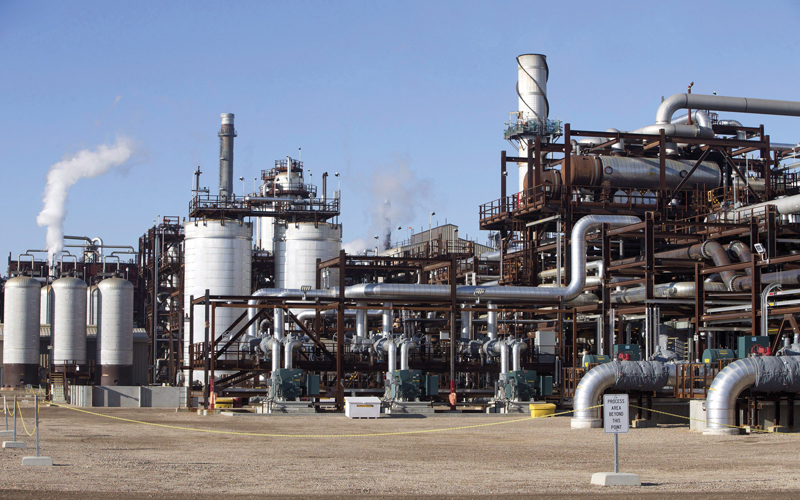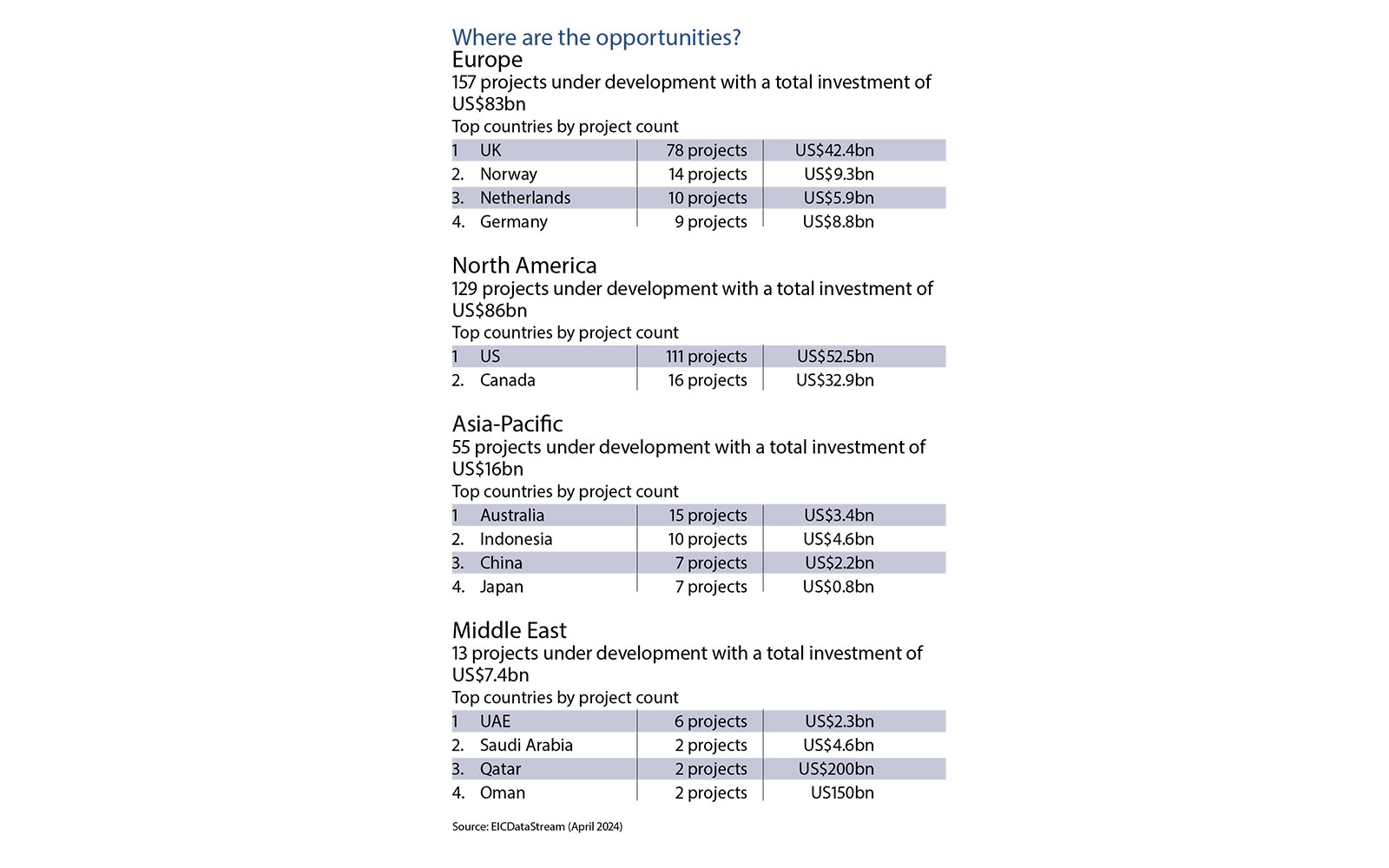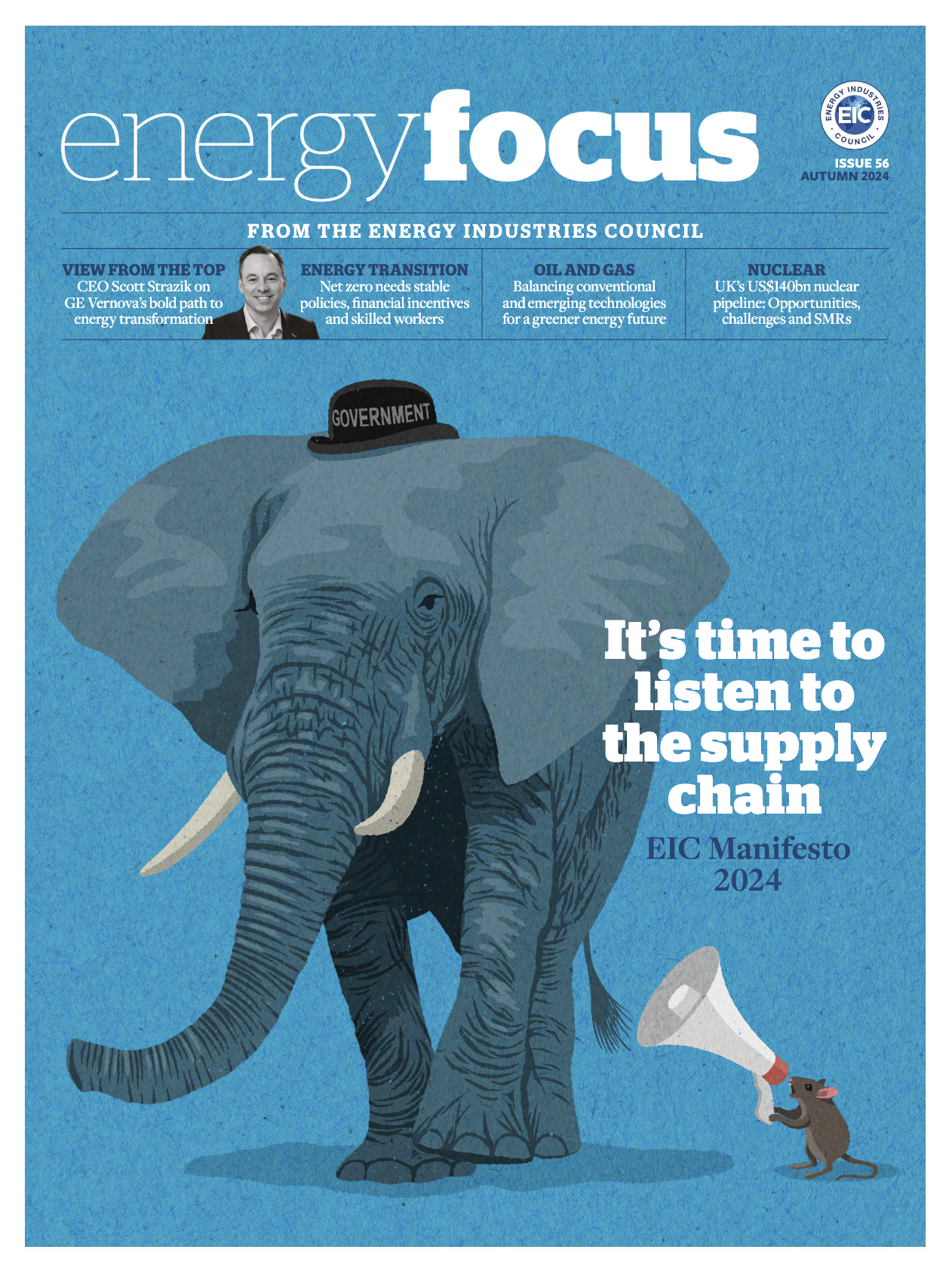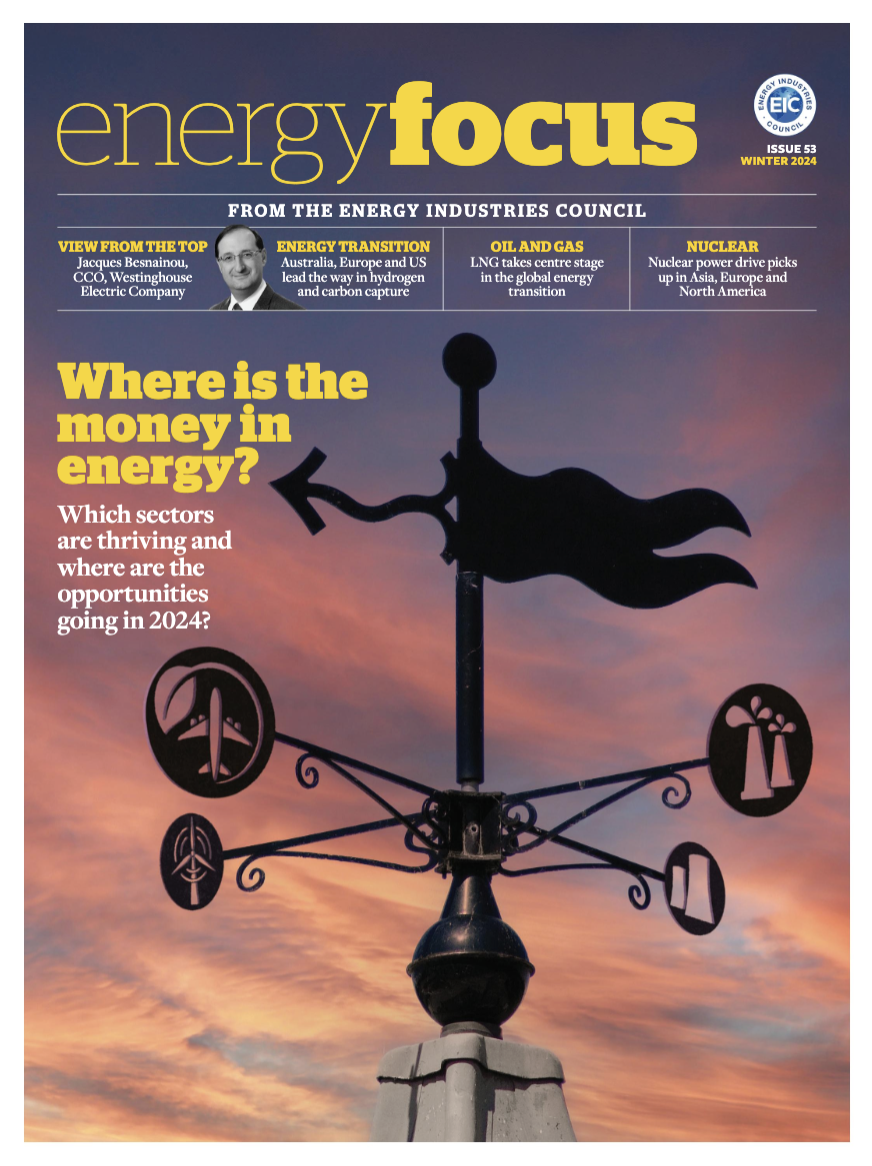Unveiling global leaders: carbon capture around the world
Exploring the global surge in carbon capture, EIC’s Aadam Sufi and Fleur Pomeroy highlight key regions driving innovation and investment, from Europe’s policy-driven initiatives to North America’s extensive project pipeline and Asia-Pacific’s emerging markets

Carbon capture has seen unprecedented growth in recent years, with legalisation, project announcements and funding schemes all progressing at a rapid pace. EIC is currently tracking more than 360 projects under development
Europe is poised to be a global leader in the carbon capture industry, thanks to supportive EU policy laying out the regulatory landscape for the technology and cross-national collaboration. Consequently, an integrated infrastructure network is likely to take shape across the continent in the coming years, extending from the UK to the Nordic countries to Central Europe.
In the region, carbon capture is expected to primarily target industrial decarbonisation, particularly in the concrete, steel and chemicals industries, along with the development of new blue hydrogen facilities. The EU’s Green Industrial Plan is underway and aims to streamline regulatory procedures and bolster project funding through instruments such as the InvestEU, RePower EU and the Important Projects of Common European Interest. Legislation is provided by the Net Zero Industry Act, which targets 50 million tonnes per year (mtpa) of CO2 injection by 2030, with individual contributions from oil and gas producers determined proportionally based on their fossil fuel production levels. Incentives include the aforementioned funding as well as the high carbon prices under the EU Emissions Trading System. The EU has also approved several funding schemes by individual states across the bloc.
Countries leading the way in Europe
UK
The UK is a world leader in its carbon capture initiatives, with more than 60 projects in the pipeline. These projects primarily focus on decarbonising power and using storage sites and depleted oil and gas fields in the North Sea. Strong government backing has seen £20bn promised over the next 20 years for the industry, with the cluster approach being employed to mitigate risk by integrating several regional capture projects into a central network for transportation and storage.
Norway
Norway is one of the most advanced countries for carbon capture. It has decades of experience, being one of the first countries to use the technology in 1996. The country has invested heavily in its flagship Northern Lights carbon capture and storage (CCS) project and offers several incentives for deployment.
Netherlands
The Netherlands has ambitious plans for carbon capture, largely centred around the Port of Rotterdam. Many of these planned projects involve using carbon capture to produce low-carbon hydrogen. The Porthos project stands out as one of the most important first-mover projects around the world and one of the largest to now reach financial investment decision. The country’s Sustainable Energy Production and Climate Transition Incentive Scheme serves as a significant boost for new projects, providing a 15-year subsidy support contract to help make the technology profitable and bring it to market.

North America
North America is leveraging its substantial expertise in carbon capture to become a global trailblazer for deployment. The region has announced multiple large-scale CCS plans, including several of the world’s most prominent proposed facilities.
US carbon capture prowess
The US leads globally in carbon capture, utilisation and storage (CCUS), with more than 100 projects tracked across the country. A key driving force behind carbon capture in the US is its well-established Enhanced Oil Recovery (EOR) industry, which uses captured CO2 to maximise oil extraction from underground wells. With a robust infrastructure already in place, the US boasts more than 5,000 miles of CO2 pipelines and ample storage potential in the Gulf of Mexico.
The country’s Inflation Reduction Act (IRA) stands as the greatest incentive for carbon capture, with the 45Q tax credit being increased to up to US$85/tonne for point source carbon capture and up to US$180/tonne for direct air capture (DAC). The changes allow more projects to qualify, and the capture threshold has been lowered. The upcoming presidential election may invite uncertainty regarding the future of IRA tax credits and other supporting policies.
Canada’s commitment
Canada has prioritised carbon capture in its decarbonisation plans, with a target of 15 million tonnes of CO2 to be captured and stored by 2030. Incentives exist on both the federal and provincial level, with EOR and the decarbonisation of the country’s vast greatly polluting oil sands likely to be the biggest drivers. The CCUS Investment Tax Credit, introduced in 2021, offers a refundable investment tax credit of up to 60% for carbon capture equipment costing more than US$4bn. This credit is likely to become active later this year. However, the upcoming 2025 elections could impact federal-level support for the technology.
Supply chain constraints
Most of the equipment and services required for deploying CCS projects have commonalities with those in the oil and gas sector. Despite these transferable skills, there are concerns that the current global supply chain is insufficient to meet the demands of the current project pipeline. Carbon capture is not the only industry with significant demands on its supply chain; other energy transition sectors, such as hydrogen, as well as traditional oil and gas, are also expected to require extensive resource.
Large-scale fabrication is a specific area of concern, especially in Northern Europe. The UK lacks the capability and capacity to support many of these projects. In contrast, other regions, such as North America and Asia-Pacific, show better resilience to supply chain capacity concerns. However, the extent of how other regions and industries using these supply chains will affect the availability of these manufacturers is yet to be determined.
Interested in exploring energy transition opportunities?
Inform your decision-making with the latest contracting activity and market research from EIC.
To discuss your needs, email Sharanya Kumaramurthy at sharanya.kumaramurthy@the-eic.com
Asia-Pacific
Asia-Pacific is positioned as an emerging carbon capture market, with several countries planning to invest in the technology to reduce reliance on fossil fuels, particularly coal. Around a third of global CO2 emissions come from the region, with fossil fuels accounting for 90% of Southeast Asia’s energy mix. Carbon capture hubs are expected to be developed in the region, with captured CO2 transported from East Asia, particularly Japan, towards storage sites in offshore Southeast Asia and Australia.
Australia
Australia is one of the region’s most mature markets for carbon capture, with Santos the largest developer. The company aims to use carbon capture to decarbonise and thereby extend its oil and gas operations. There is huge storage capacity offshore – estimated at more than 20bn tonnes.
Indonesia and Malaysia
Indonesia and Malaysia are gearing up to establish themselves as regional CCS centres, with plans for multiple hubs in both countries. State-owned oil and gas operators are set to work with foreign players, notably from Japan and Korea, to construct projects.
China and Japan
China is planning several carbon capture projects focused on the chemical industry, and has prioritised the technology in its latest Five-Year Plan, as well as incentivising the technology through its carbon tax system. Japan is also expected to play a significant role, announcing its roadmap in January 2023; it aims to store up to 240mtpa by 2050, and has seven hubs under development.
Middle East
The Middle East and North Africa region is set to become a leading carbon capture advocate, given its dependence on oil and gas and its determination to decarbonise while continuing to power its economies through the industry.
Saudi Arabia’s carbon-free drive
Saudi Arabia, one of the world’s highest per capita emitters, has shown a strong commitment to carbon capture. State-owned oil company Aramco has set a capture target of 11mtpa by 2035, while Saudi Arabia aims to reach 44mtpa. The country has declared that it will not build any new power stations without carbon capture technology.
Gulf cooperation on CCUS
The UAE is one of the first movers in the region, with an operational carbon capture plant and expansion plans underway. Additionally, it has plans to co-operate with the US on DAC. Meanwhile, Qatar and Bahrain have also established targets and committed to CCUS.

Major projects To Watch
UK
Net Zero Teesside
Value: US$3bn
Startup: 2029
Stage: Engineering, procurement and construction (EPC)
Status: Contract awarded
Operator: Oil and Gas Climate Initiative
Norway
Northern Lights
Value: US$1.5bn
Startup: 2024
Stage: EPC
Status: Contract awarded
Operator: Northern Lights JV
Netherlands
Porthos CCUS Transportation and Storage
Value: US$1.3bn
Startup: 2026
Stage: EPC
Status: Contract awarded
Operator: Port of Rotterdam Authority
Canada
Pathways Alliance
Value: US$16.5bn
Startup: 2030
Stage: Front-end engineering design (FEED)
Status: Planning consent applied
Operator: Pathways Alliance Group
US
Baytown Project
Value: US$2bn
Startup: 2029
Stage: FEED
Status: Contract awarded
Operator: ExxonMobil
Australia
Bayu-Undan
Value: US$1.1bn
Startup: 2028
Stage: FEED
Status: Contract awarded
Operator: Santos Ltd
Saudi Arabia
Jubail Industrial City
Value: US$4.5bn
Startup: 2027
Stage: EPC
Status: Tendering and bidding
Operator: Aramco
UAE
Al Reyadah
Value: US$1bn
Startup: 2030
Stage: FEED
Status: Contract awarded
Operator: Al Reyadah
Source: EICDataStream (April 2024)
Image credit | Getty | Shutterstock Rex | Supplied






Follow us
Advertise
Free e-Newsletter